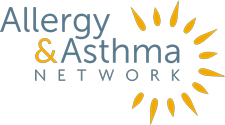Myth: All allergy testing is the same.
Truth: Patients need to be careful where and with whom they get their allergy testing. At-home testing kits or testing done at malls or pharmacies are a waste of money. The testing is neither the beginning nor the end of a diagnosis – it’s part of the whole puzzle. Allergy tests alone do not diagnose an allergic disease. Trained allergists perform allergy testing, interpret patient and family history and conduct other required tests. Expect reliable results under the supervision of a board-certified allergist.
Myth: Skin testing for allergies is painful.
Truth: Usually described as feeling like a mosquito bite, skin tests drop allergen extracts in shallow scratches or pricks on adults’ forearms or children’s backs. Allergic results measure the raised itchy bumps. All testing should be closely monitored by and performed under the supervision of a board-certified allergist. Tests are fast – 15-20 minutes.
Myth: Allergy testing is not for babies.
Truth: Allergy testing is available for children of any age. Many board-certified allergists also have training in pediatrics. With a patient and family history, an allergist determines which allergy tests are best for an infant or a young child.
Myth: Allergy testing automatically leads to immunotherapy.
Truth: A patient’s age, test results and family history help determine the appropriate treatment plan. Immunotherapy is one option depending on the allergy. Other options include medication, strict avoidance of the allergen, products such as dust mite encasings for pillows and mattresses, and changes to home environments such as fixing leaks or keeping pets out of the bedroom. Allergists help families decide which options are best.
Myth: A positive test result for a specific food means you need to remove it from your diet.
Truth: Not necessarily. A board-certified allergist will walk you through the results of allergy testing for food. He will then determine if any further testing is required based on factors such as family history and previous reactions. A positive result means there is a possibility of an allergy. Skin and blood tests may show false/positive results because foods often share similar proteins. After a thorough evaluation and possibly a food challenge test, the allergist will decide if a specific food needs to be removed from your diet.

 810304 Eaton Place, Suite 100
810304 Eaton Place, Suite 100